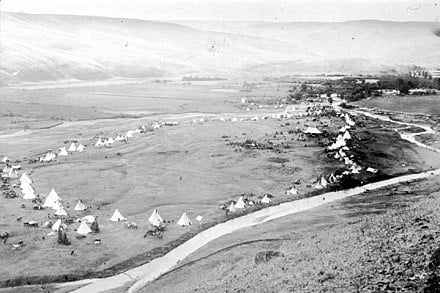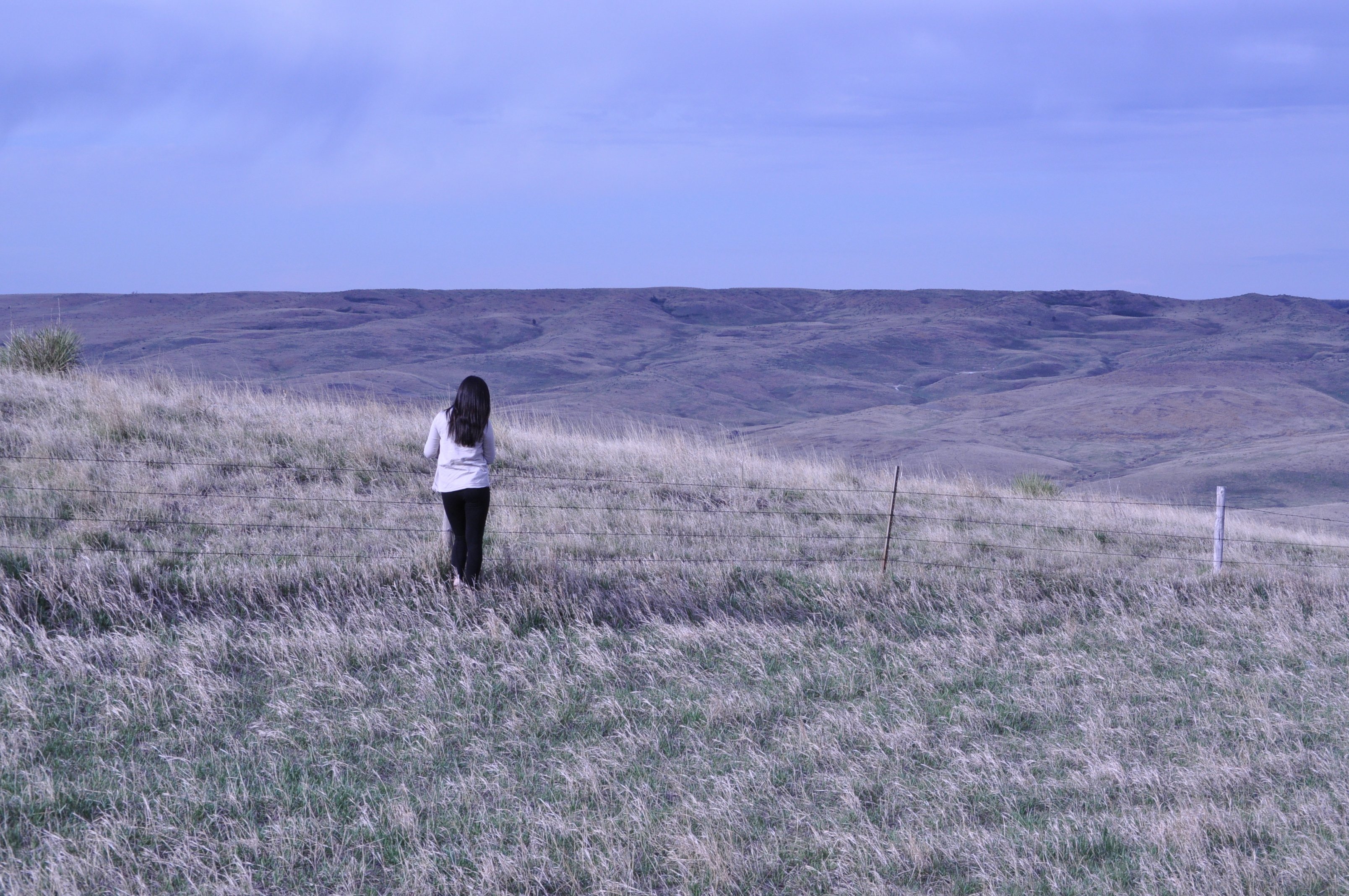Feb 3, 2025 | Native Hope
The Shoshone tribe has inhabited the Great Basin and Great Plains for over 10,000 years. They lived in what is now Nevada, Idaho, Utah, and beyond. Their history is one of adaptation in the face of drastic changes to their way of life and countless threats to their land. Shoshone influence spans eras of change, hardship, resilience, and cultural endurance from pre-colonial times to the present.
Despite the invasion and confiscation of their homelands by settlers, miners, and the U.S. government, the Shoshone people bravely fought to protect their territory and way of life. While hardship has been no stranger to the Shoshone, today, their cultural heritage lives on through descendants keeping ancient traditions alive and upholding tribal sovereignty. Across several reservations, the heart of Shoshone identity persists through language, songs, dances, and the cherished connection to their ancestral homelands.
Shoshone History
 Early Shoshone life was nomadic. The tribe followed seasonal food sources throughout the year, hunting small game, fishing, and gathering roots and seeds. Their yearly hunting grounds covered parts of Wyoming, Idaho, Utah, and Nevada. The Shoshone lived in small family groups that joined into larger bands of 300-400 during the winter, camping in valleys for protection. The tribe was divided into four main groups based on territory: Western, Northern, Wind River, and Comanche, with the Comanche emerging as an offshoot of the Wind River Shoshone who acquired horses and moved to Texas.
Early Shoshone life was nomadic. The tribe followed seasonal food sources throughout the year, hunting small game, fishing, and gathering roots and seeds. Their yearly hunting grounds covered parts of Wyoming, Idaho, Utah, and Nevada. The Shoshone lived in small family groups that joined into larger bands of 300-400 during the winter, camping in valleys for protection. The tribe was divided into four main groups based on territory: Western, Northern, Wind River, and Comanche, with the Comanche emerging as an offshoot of the Wind River Shoshone who acquired horses and moved to Texas.
Initially, the Shoshone had friendly relationships with European settlers, providing support and supplies in the early days. The Shoshone provided invaluable help to Lewis and Clark during their expedition from 1804-1806, notably through Sacagawea, a Shoshone woman who helped them survive and continue their journey.
However, tensions grew as settlers took Shoshone game and fish and encroached on their lands. By the late 1800s, after warfare with settlers and other tribes, the Shoshone were forced onto reservations in Idaho, Nevada, and Utah. Much of their land was lost to disease and war during these years.
Shoshone Battles and Resistance
Raids from Blackfoot, Crow, Lakota, Arapaho, and other tribes armed with guns pushed the Shoshone from the northern plains, with some members relocating as far sout h as Texas. As settlers invaded Shoshone land and mining parties hoarded resources, the Shoshone engaged in battles and wars to protect their people. The Snake War (1864-1868) was one of the first of these conflicts. The Shoshone also joined other tribes in resistance efforts, such as during the Bannock War (1877-1878) against U.S. forces attempting to move tribes onto reservations. Over time, the U.S. government used treaties and force to reduce Shoshone land from over 44 million acres to just over 1 million acres.
h as Texas. As settlers invaded Shoshone land and mining parties hoarded resources, the Shoshone engaged in battles and wars to protect their people. The Snake War (1864-1868) was one of the first of these conflicts. The Shoshone also joined other tribes in resistance efforts, such as during the Bannock War (1877-1878) against U.S. forces attempting to move tribes onto reservations. Over time, the U.S. government used treaties and force to reduce Shoshone land from over 44 million acres to just over 1 million acres.
Despite their resistance, the Shoshone sometimes allied with the U.S. Army against tribal enemies like the Lakota and Cheyenne, as in the Battle of the Rosebud in 1876. They suffered devastating casualties at the Bear River Massacre in 1863 when U.S. forces attacked a Shoshone winter village, killing around 250 people, including women, children, and the elderly. Battles during the Plains Wars from the mid-1800s to the 1890s significantly reduced Shoshone numbers. Forced relocation to reservations further led to population decline due to disease and poor conditions.
Shoshone Culture and Traditions
Shoshone Lifestyle
The tribe excelled in horseback riding and defending their lands. They adopted portable teepee housing to support their nomadic lifestyle, with men specializing in buffalo hunting and women caring for the camp and processing meat and hides.
Shoshone Food
The Shoshone traditionally hunted small game like rabbits, antelope, and buffalo, gathered seeds, plants, tubers, and roots, and fished for salmon. After adopting the horse in the early 1700s, they extensively hunted buffalo. They respected nature, ensuring to use all parts of the animals they hunted for food, tools, and clothing.
Shoshone Language
Shoshone natives spoke related languages within the Uto-Aztecan language family. The dialects were mutually intelligible between bands. Today, there are about 1,000 fluent speakers of Shoshone, with languages taught at the Fort Hall reservation and some universities.
Shoshone Spiritual Beliefs
Animism and Shamanism were significant parts of Shoshone spirituality. Vision quests and dreams were sources of spiritual power. They believed that plants, animals, and land had living spirits deserving respect and care. The Sun Dance, held in the summer, was a major event where dancers sacrificed food and water for blessings. The Shoshone also participated in other dances for annual events like the salmon return.
What Are the Shoshone Known For?
The Shoshone provided invaluable help to Lewis and Clark during their expedition from 1804-1806. Sacagawea was Shoshone, and her travel with the men helped them survive and continue their journey.
This tribe was also excellent on horseback and skilled in defending their lands from outsiders and threats. They adopted more portable teepee housing to facilitate their nomadic lifestyle. The men specialized in buffalo hunting, and women cared for the camp and processed meat and hides.
Where Are the Shoshone Today?
Federally recognized Shoshone tribes are located on several reservations in Idaho, Utah, Nevada, and Wyoming. The largest populations reside on Duck Valley and Goshute reservations. Their economy is based on ranching, agriculture, and natural resource use. Tribal enrollment varies in number from a few hundred members to over 3,000.
Today, around 12,000 people in total identify as Shoshone. They preserve the culture through language revitalization, songs, dances, and oral history. Their culture is still thriving despite the oppression and assimilation attempts over the years. Shoshone cultural traditions like the Sun Dance, traditional food, and arts are also essential and taught to new generations.
The Shoshone have endured tremendous hardship but carry forward a rich cultural identity into today. Their history illuminates the struggles of Native peoples during westward expansion. Despite efforts to eradicate their culture, the Shoshone retain and proudly preserve their heritage for future generations.
Want to learn more about Native American history?
Grab our guide, Reflecting on Our Foundations, to learn about:
- Different tribes and where they lived
- Native American values and spirituality
- How learning and culture were passed down through generations
- How colonization impacted and disrupted Native American life
- And much more!




COMMENTS